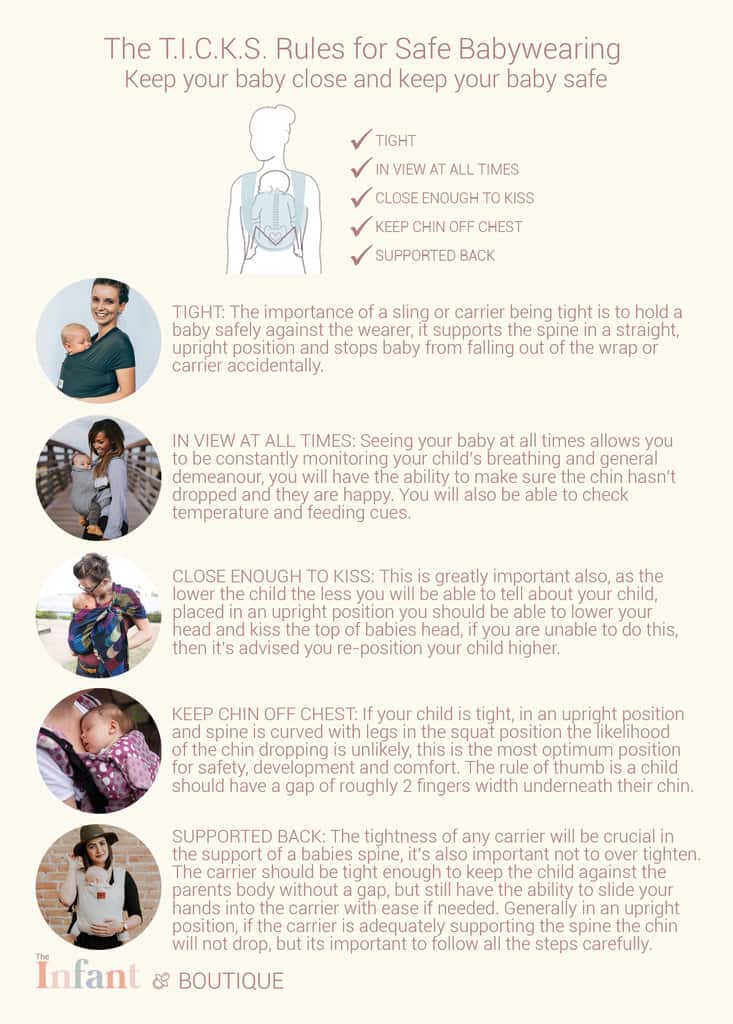Babywearing Safety
How to ensure you are wearing your baby safely
It’s completely understandable to want to ensure that you’re babywearing safely and correctly. To help you get started, I’ve gathered essential knowledge and safety tips from experienced babywearing educators and pages. The safety and comfort of your baby should always be your top priority when babywearing.
One useful resource to guide you is the TICKS guidelines created by the UK Sling Consortium, which provides clear instructions on how to wear your carrier and the optimal position for your baby. By following these guidelines, you can confidently enjoy the many benefits of babywearing while keeping your little one safe and secure.
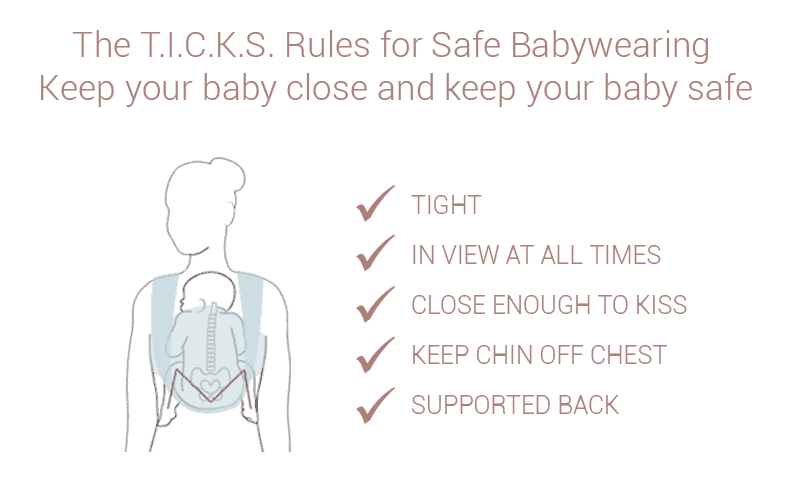
To see the full TICKS Guidelines or to download a printable flyer, hit the button blow.
How to tell the difference between safe and unsafe babywearing
As a new babywearer, it can be challenging to distinguish between safe and unsafe practices. To help you learn the proper way to wear your baby in a carrier, I’ve compiled a collection of images that illustrate safe techniques. Unfortunately, with many movies, TV shows, celebrities, and influencers not following safe babywearing practices, it can be confusing for new wearers to understand the best practices.
Fortunately, the babywearing industry is continually evolving, researching new technologies and techniques to improve safety and comfort for both the wearer and the baby. It is important to stay informed and educated on the latest guidelines and recommendations because what was once considered safe may no longer be the case.
Unsafe
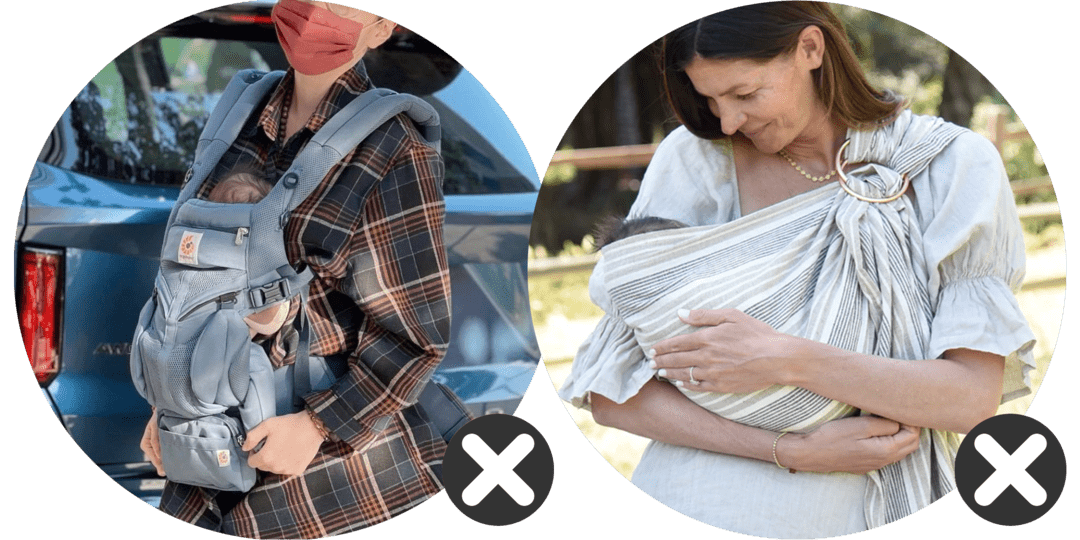
If you follow the TICKS rules, you will see that both of these carry positions have been deemed unsafe, especially for newborns.
To the left, baby is positioned to low with the top of the carrier pressing baby’s head into the wearers chest.
To the right, baby is not in an upright, chest to chest position.
In both of these positions, the baby’s face is not in view or it’s head close enough to kiss meaning you cannot see or guarantee that baby’s chin is off it’s chest keeping the airways free.
Safe

Comparing these visuals tou the unsafe examples, you can see the difference in the positioning of both babies.
To the left, baby is nice and high on the wearers chest with head close enough to kiss. The head support is resting just at the nape of baby’s neck providing a cushion rather than pushing baby’s head fuether into the wearers chest.
To the right, baby is positioned correctly chest to chest with the wearer with baby’s face nice and visible with airways free and clear of fabric.
Comparing optimal and subotimal carriers
When babywearing first gained popularity in the early 90s, narrow-based carriers were among the original soft-structured carriers to hit the market. However, as more research was conducted, baby carrier designs have evolved to better support both the baby and the wearer ergonomically.
While non-ergonomic carriers, also called suboptimal or narrow-based carriers, may not necessarily be unsafe for your baby, they may not provide the most optimal position for hip and spinal development. It’s important to note that any carrier that securely holds the baby with open, unobstructed airways, in accordance with the TICKS guidelines, is considered safe. However, an optimal carrier provides all of these safety features and more.
The optimal position for a baby is in its natural and most beneficial position for hip and spinal development. As discussed in our ‘Babywearing in the First Year’ article, the optimal position changes as the baby grows older. Some people choose to switch to a different type of carrier as their baby develops, while others prefer to stick with the same carrier from birth until toddlerhood. These practices are not unsafe as long as the wearer follows the manufacturer’s guidelines for using the carrier.
Suboptimal
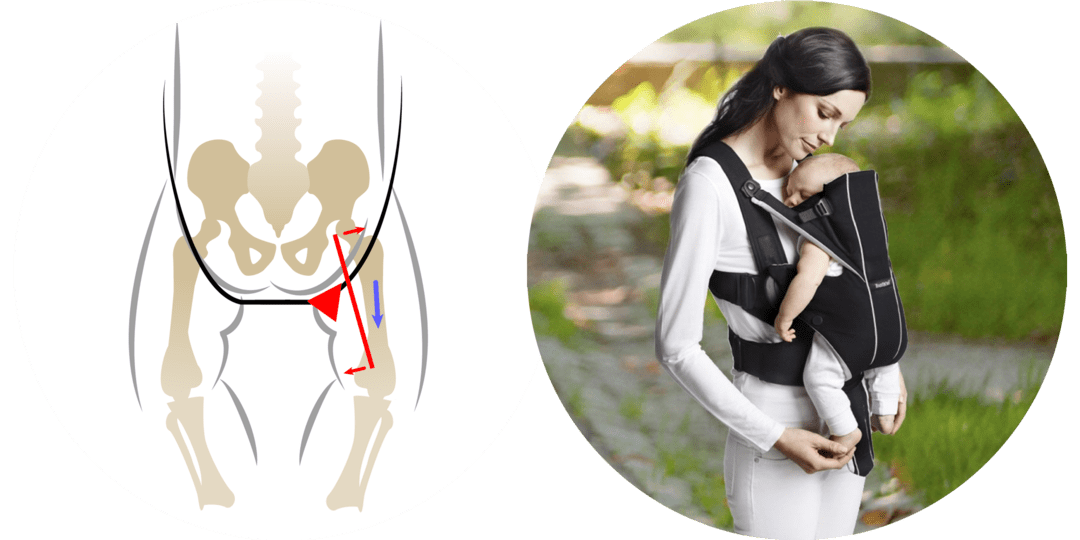
Not ergonomically designed and places legs in an unhealthy position. The thigh is not supported to the knee joint adding pressure to the hip joint. Carries the risk for abnormal hip development.
Optimal
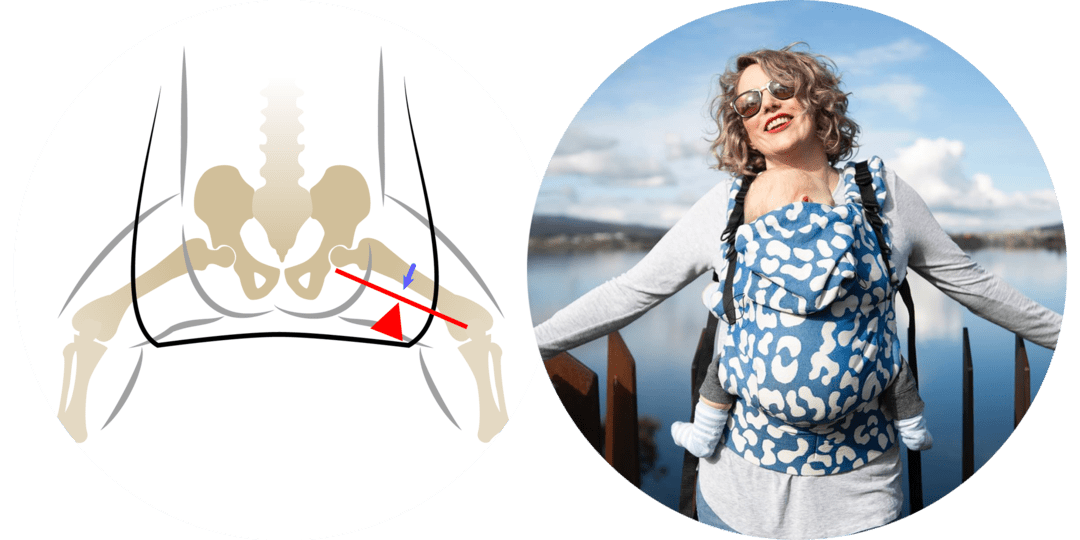
Ergonomically designed carrier with hips in a healthy position. Thighs spread around the mother’s torso and the hips bent so the knees are slightly higher than the buttocks with the thighs supported.
Forward Facing and Back Carrying
Forward Facing Carry
Forward-facing carrying can be an enjoyable way to connect with your baby and introduce them to the world, but it’s crucial to prioritize safety. Before you start, ensure that your baby is developmentally ready, usually around 6-9 months when they have better neck, spine, and muscle control and can sit independently. Exposing younger babies to this position can harm their neck, spine, and hips because of their weaker muscles and inability to support their head.
It’s essential to follow the manufacturer’s guidelines when forward-facing your baby, which often recommend a limit of 20-30 minutes per session. However, this position can tire some babies quickly and be overwhelming for them. Pay close attention to your baby’s body language and facial cues to determine when it’s time to return them to an inward carrying position where they can rest their head on the carrier for better support and fall asleep comfortably on your chest.
Remember, your baby’s safety and comfort should always come first. So, enjoy forward-facing carrying with your baby, but only when they are developmentally ready, and pay attention to their cues to ensure a happy and safe babywearing experience.
Back Carry
Much like forward facing carries, back carries should only be performed once your baby can sit unassisted, which is usually between 6-9 months of age. However, it’s important to note that some babies may still be quite small at this age, so you may feel more comfortable waiting until your baby is 12+ months to start back carrying.
When back carrying, the TICKS guidelines still apply to keep your baby safe. It’s important to have your carrier positioned high on your waist, rather than on your hips. Additionally, when your baby is in the carrier, you should be able to lean your head back and touch your baby’s forehead, just like the “Close Enough to Kiss” position.
Always follow the manufacturer’s guidelines when it comes to back carrying, including the weight limit of the carrier and any specific instructions for how to use the carrier in the back carry position. Remember to pay attention to your baby’s cues and adjust the carrier as needed for their comfort and safety.
Forward Facing Carry
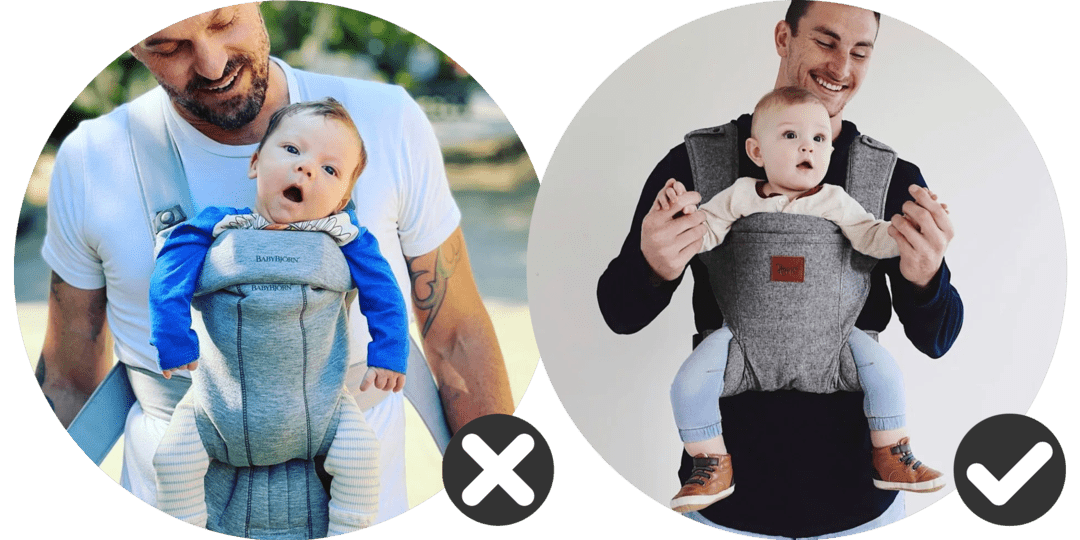
Back Carry
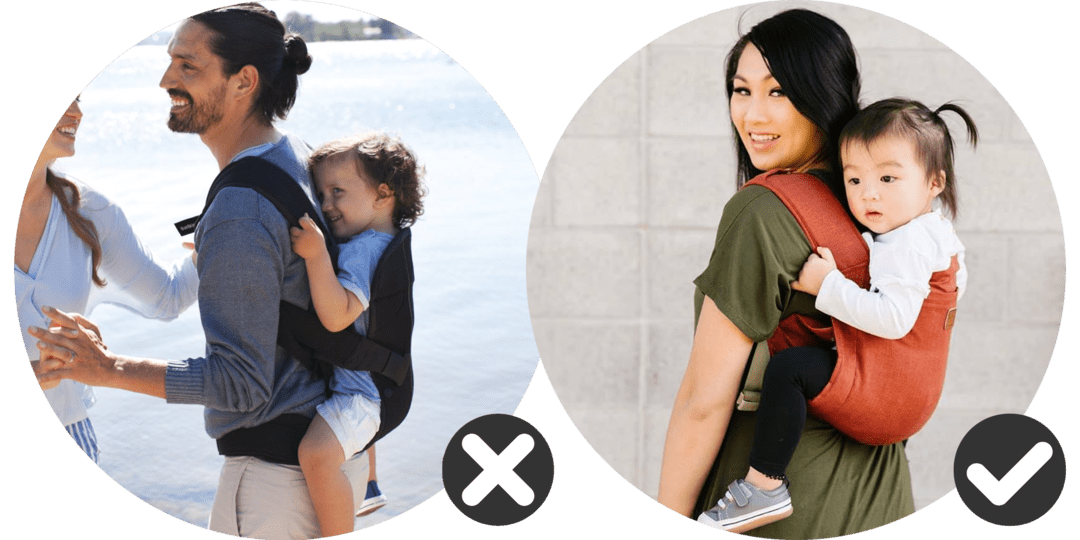
When using any baby carrier, please keep the following safety tips in mind:
- Read and follow all manufacturer’s instructions for use. Each carrier is different and has specific guidelines for use, so make sure you understand them.
- Ensure you can see your baby’s face at all times. Do not let your baby’s face press into your body, and avoid covering their face with a blanket, swaddle wrap, nursing cover, or any fabric that restricts their breathing.
- Make sure your baby’s head and neck are gently and completely supported, with their chin off their chest. If their chin is pressed tightly to their chest, it can restrict their airway. Check by slipping two fingers between their chin and chest to ensure proper positioning.
- If your infant was born with a low birth weight, such as a preemie or twins, or has respiratory illness or other respiratory problems, always consult a medical professional and/or babywearing consultant. These babies require extra vigilance.
- After breastfeeding in a carrier, remove your baby from your breast and return them to the proper carrying position with their head above your breasts and face free of fabric, turned away from your body.
- Check on your baby often, especially those under 4 months of age, and observe their breathing and warmth to ensure they do not overheat in warmer weather.
- Always remember and refer to the T.I.C.K.S guidelines for safe babywearing: Tight, In view at all times, Close enough to kiss, Keep chin off the chest, and Supported back.
- If you are ever in doubt, reach out to a professional and ask for help. Babywearing consultants and medical professionals can provide guidance and answer any questions you may have.
